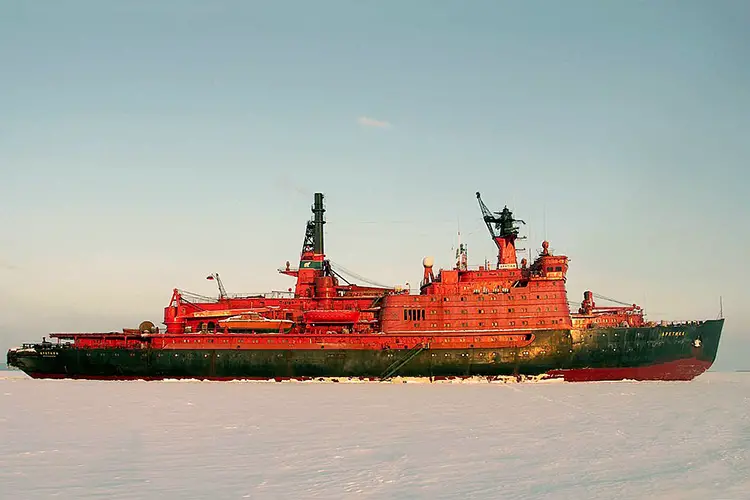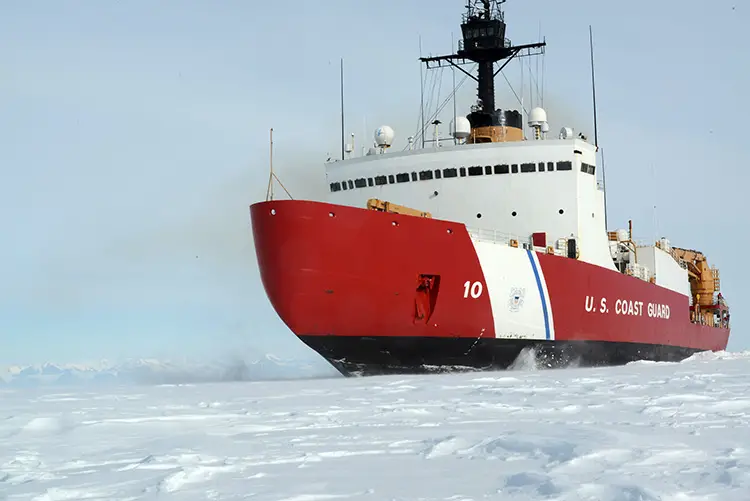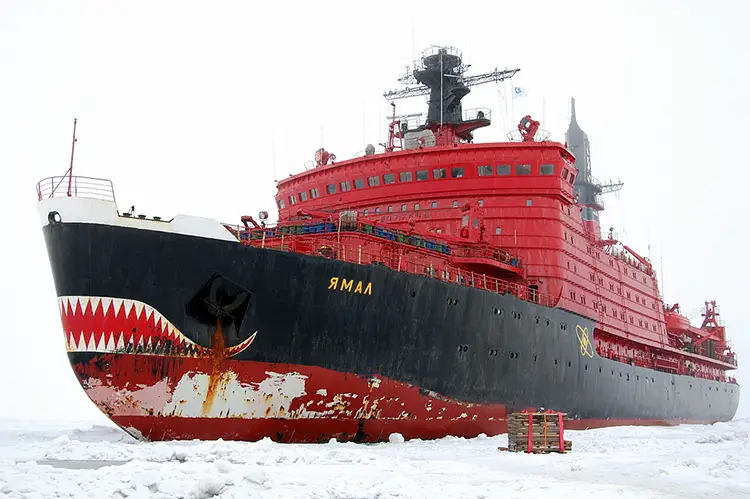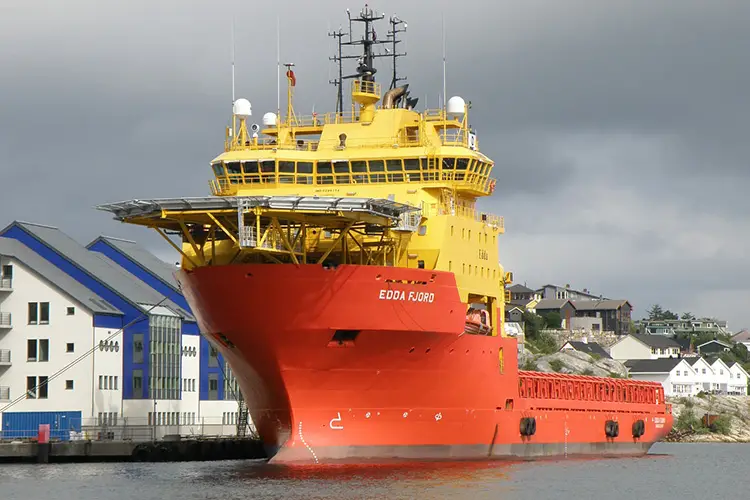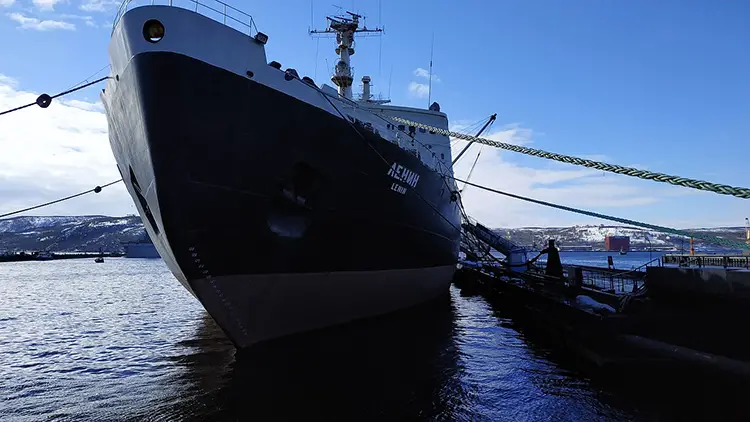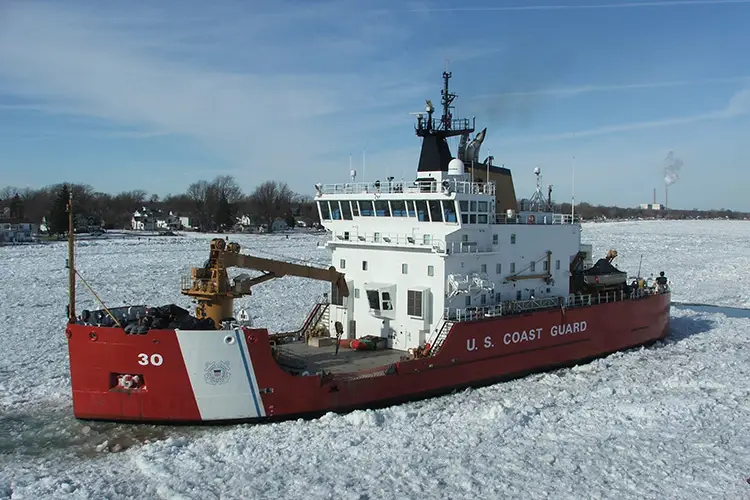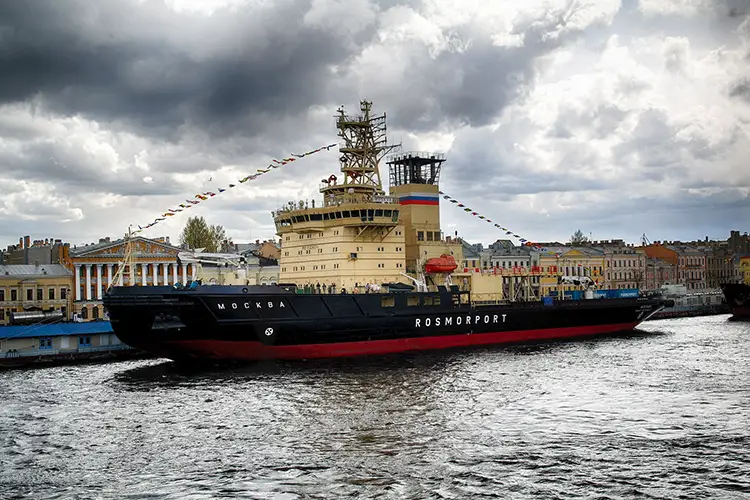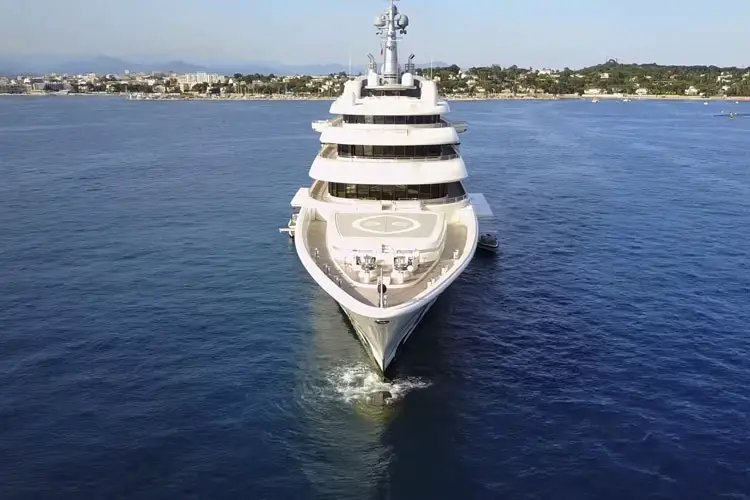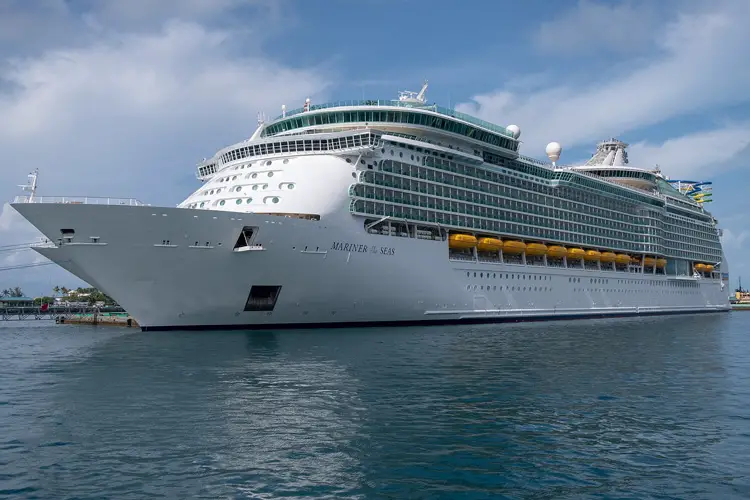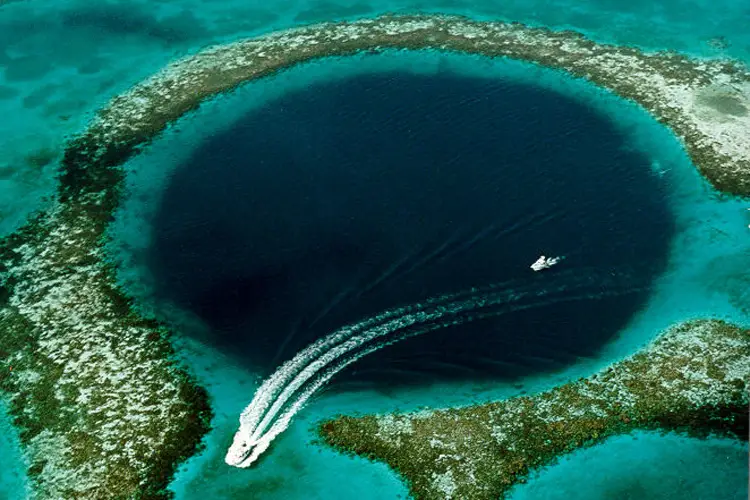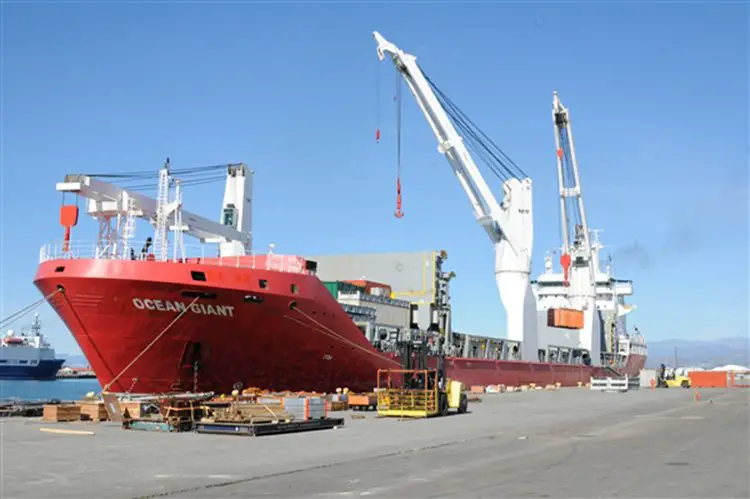How Does An Icebreaker Ship Work?
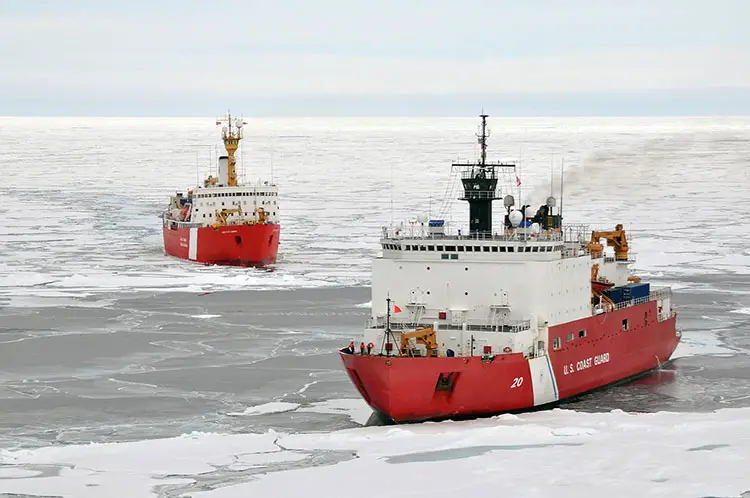
An Icebreaker ship is designed and built to enable seafarers to sail through ice-covered waters, by breaking the huge ice blocks into smaller pieces and creating a clear passage through the frozen seas mainly in the Arctic seas.
What is an Icebreaker Ship?
Before we get to know how it works, we first need to understand what it actually is. The name is pretty self-explanatory. An ice breaker ship is the kind of ship that is specially designed to break through the thickest ice, something that is especially required in the Polar Regions. Its most distinguishing feature is the strengthened hull that enables it to perform the task it is designed for. It requires a lot of power to move through the ice sea.
Though the ship has reached its fullest potential in recent years the idea of an ice breaker ship has been around for as long as the 11th century. However, ships had not been discovered yet, so it was more like an icebreaker boat.
The ships that were initially made were known as Kochi and were created by people living near the icy coasts of the Arctic Ocean. The Kochi was a small wooden vessel having one or two masts that were used to navigate through the freezing waters of Arctic seas and Siberian rivers.
For the protection of the hull, the ship is equipped with a belt of ice-floe resistant flush skin-planking. On the unlucky occasion of the ship getting squeezed by the ice fields the rounded body lines below the water-line assist in pushing the vessel up. The basic design and concept have remained the same in the modern Ice Breaker Ships, only the efficiency has increased manifold.
As we have discussed previously shipping is the most cost-efficient method of transportation currently available. But during the winters the trade routes become icy and need clearing for the smooth flow of commercial activities. This is where the Ice Breaker Ships come into play. They clear the trade routes so that vessels like the ones sailing through the Baltic Sea, the Saint Lawrence Seaway, the Great Lakes, and the Northern Sea-Route can continue sailing smoothly.
So basically, Ice Breaker Ships are used to clear the path for commercial vessels. Apart from that these vessels are also used in the research programs that are carried out in the Polar regions.
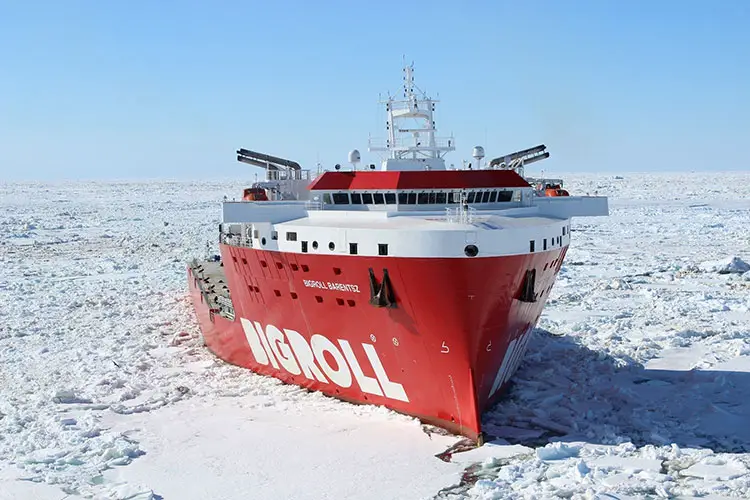
Characteristics of an Ice Breaker Ship
Some of the important characteristics of an Ice Breaker Ship have already been discussed before. The design of an Ice Breaker Ship like any other ship is focussed on the vessel’s functionality. The Ice Breaker’s task is to cut through ice. For that purpose, a strong hull is required. The ice resistance should also be strong. Hence, the ice breakers come equipped with double hulls and the side and bottom feature two layers of water-tight surfaces. They are comparatively thicker as compared to other vessels.
The stem might be of different configurations like sloping ones, rounded ones, etc. and the sides are sloping too. In order to create an ice channel of a greater area, the hull is sometimes wider than the bow in an Ice Breaker Ship.
Just having a well-built hull is not enough, some extra strengthening structure needs to be added too in order for the Ice Breaker Ship to function smoothly with efficiency. Hence, it is no surprise that the design of this particular ship is what sets it apart from other ships.
Where for normal ships the hull needs to be pointed in order to slice through the waves and also to minimize the friction between the ship and the water, for Ice Breaker Ships the hull needs to be thick and the bow rounded.
In fact, these ships come equipped with steel shell plating that is up to 50 meters in thickness and 500 Mpa strength. These platings make the vessel resistant to fracture under ambient low temperature and high loading conditions, a feature not so common in normal ships. The whole body of the vessel is structured in a manner as to break through ice or ride over it.
Previously the Ice Breaker Ships used to depend on coal and oil for their power. Nowadays, they are powered by diesel and electric,ity and in some cases, they are even nuclear powered. They require this power to smoothly maneuver through the icy waters. The enhanced power is used to fire the two propellers fitted at both ends of the bow thruster.
An example of an Ice Breaker Ship is the United States Coast Guard’s Polar-class icebreakers. These powerhouses come equipped with the diesel-electric and mechanical propulsion system. The six diesel engines produce 13,000 kW of power and three gas turbines produce 45,000 kW power.
Nuclear Ice Breaker Ships
We just mentioned nuclear-powered ice breaker ships in the previous section. Let us discuss it in greater detail here for these are probably the most important type of ice breaker ships considering the type of job that they are involved in.
Technological advancements have made some spectacular changes in the ice-breaking industry and the Nuclear Ice Breaker Ship proves to be the biggest example of it. Cutting through ice is a cost-intensive affair since a lot of fuel is required in the process.
Nuclear Icebreaker Ships solve the fuel problem caused by the traditional icebreaker ships. An icebreaker would consume up to 100 tons of fuel in order to cut through 3-meter-thick ice in the frozen waters of Russia. That is indeed an expensive affair even when we consider some high return usage scenarios like oil extraction. This problem is solved by Nuclear Icebreakers as ships working in ice-covered secluded regions as the need for refueling is eliminated as just a pound of uranium is enough to take care of the previously mentioned situation.
Hence, it is a much better option as compared to the traditional ones as the return on investment is much higher than the other options.
At present all the nuclear-powered icebreakers of the world are operated by Russia. They launched the first of its kind in 1957 and in 2007, the latest one was put into service. Currently, Russia operates eight nuclear-powered ice breakers that they use for various purposes. URAL is the world’s largest nuclear-powered nuclear icebreaker.
How an Icebreaker Ship Works
Now that we have come to know about Icebreaker Ships, their types and usage let us see how it works. The structure of these ships is gigantic (not as big as the ships and tankers that tread after icebreakers have finished their job) that complements its weight size and power that is necessary to ensure its smooth maneuvering over 3-meter-thick ice and crushing it in the process, thereby making the path accessible for other ships. Thus, for the frozen places like the Arctic and Russia, it is something indispensable.
The bow of these ships is rounded and is hence smoother than other vessels. This helps the icebreaker ships glide over thick layers of ice as the expected friction is comparatively much less. The weight of the ship crushes the ice as it glides over it.
The smooth design of the hull ensures that the ice gets pushed out of the way and does not make its way to the ship’s part for that can cause some major issues with the system and might even damage it. Since the hull is double structured, it can survive the harshest of conditions.
The outer structure of the hull is fortified by additional strengthening materials and painted using polymer paints to mitigate damage from friction. Thus, the ship glide through ice crushing it under its weight and the ice gets pushed aside by the smooth hull. The other ships are hence able to move through those waters freely again and continue the commercial activities.
Limitations of Icebreakers
The very specificity of use in the case of the icebreakers is the biggest fault of this ship. It does wonderfully well what it was built for but beyond that, it is actually of very little use. The design is a very specific one and the construction removes any trace of versatility from it leaving it as just machinery to be used in the polar regions and ice-waters only.
The typical hull shape in an ordinary ship is designed in a manner that it can withstand waves or preferably resist them. But the construction of the icebreaker is such that it takes the full force of the waves head-on. This might be efficient in the task that it is designed for but definitely makes it unusable in normal seas and makes controlling the ship really difficult.
Research is being carried out to come out with better designs that would get rid of these limitations. E.g. the double-acting ships feature propellers that can be turned in all direction to take better control of the vessel and enabling it to move backward thereby generating enough thrust to break the ice. However, these ships can be used in very specific scenarios and that is why icebreaker ships still continue to be the most popular and intelligent choice for icebreaking.
Icebreaker Ships Pictures
